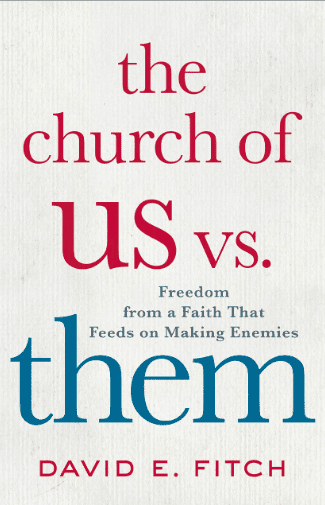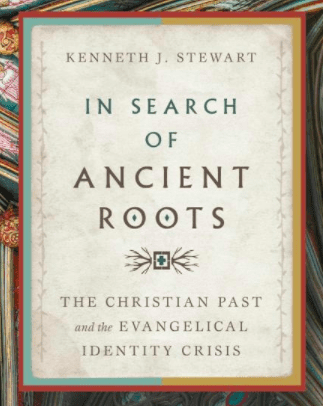 If any two branches of the church should not be political it’s these two, yet they have both become profoundly politicized, one to the Right and one to the Left. It’s easy to see why Catholics are politicized — think of Rome and Italy and the Holy Roman Empire. Politics is part of the Catholic’s DNA. Think, too, of Eastern Orthodoxy — think of Constantinople and Moscow and Alexandria and the Eastern Orthodox’s implication in the politics of those Eastern countries. Think, too, of the Anglican Communion or the Lutherans or the Reformed or Scottish Presbyterians — England, Germany, Switzerland/Holland, and Scotland. Or Ireland, the Republic and Northern Ireland. These churches have the DNA of politics.
If any two branches of the church should not be political it’s these two, yet they have both become profoundly politicized, one to the Right and one to the Left. It’s easy to see why Catholics are politicized — think of Rome and Italy and the Holy Roman Empire. Politics is part of the Catholic’s DNA. Think, too, of Eastern Orthodoxy — think of Constantinople and Moscow and Alexandria and the Eastern Orthodox’s implication in the politics of those Eastern countries. Think, too, of the Anglican Communion or the Lutherans or the Reformed or Scottish Presbyterians — England, Germany, Switzerland/Holland, and Scotland. Or Ireland, the Republic and Northern Ireland. These churches have the DNA of politics.
But the two branches that ought not to be politicized are those that have suffered ostracization and marginalization. Two groups come to mind, the evangelicals in the USA who were outed and ousted in the modernist-fundamentalist debates and the Anabaptists who not only were hunted and persecuted but alongside the fundamentalists in the USA developed a non-political, anti-political and de-political theology.
But the last thirty years reveal complicity and compromise by both sides. Evangelicals tilted so far Right they are now nearly equated with the Right; about 80% vote Right. I don’t know the votes by historic Anabaptist churches but they have become more or less Left.
Jared Burkhodler and David Cramer have an exceptional book called The Activist Impulse: Essays on the Interaction of Evangelicalism and Anabaptism. If this were an anabaptist topic blog each chapter would be worthy of a separate post, but we want to draw attention to just a few themes in this very worthy volume.
What do you think evangelicals can learn from Anabaptists? Anabaptists from evangelicals?
Steven Nolt, in his essay “Activist Impulses Across Time,” and John Roth, “Anabaptism and Evangelicalism Revisited,” make some notable points. I want to mention a few, though the essays are not as concerned with the politicization of each group as my introduction to this post suggests. Another post will delve into that theme more.
1. The connection between the two is not simple or direct; they have two different histories with some important thematic similarities — like reading the Bible for themselves over against tradition (except their own — had to say that). But as Roth points out, through the first half of the 20th Century, Anabaptists generally and pervasively themselves as “evangelical” in theology — personal crisis conversions, biblical authority, cross, etc. A big issue here was evangelicalism’s pietistic revivalism which became a bone of contention for Anabaptists in the 2d half of the 20th Century. Many thought evangelicalism was too individualistic and not kingdom/ecclesial enough. The difference is between Nachfolge (discipleship) and Gelassenheit (personal, pious surrender). Topping it off, evangelicalism got connected to patriotism while Anabaptism did not. Roth thinks this set of comparison, though, fails Anabaptism.
2. Evangelicalism’s history involves two streams (not one, ahem): the Reformed stream and the Wesleyan-Holiness stream, while Anabaptists have connected more to the second than the first stream. It is a diverse movement with a variety of activist impulses.
3. Within a few decades, and in some places immediately, the Anabaptists — in the Radical Reformation of the 16th Century — broke from any connection of the church to the State. My view is that all American churches have been shaped by this singularly important insight of the Anabaptist movement. They were did not participate in war or in oaths. Anabaptists have at least two streams: the original groups and then the later Brethren groups who joined the original movement at the hip after absorbing more of Lutheranism’s pietism and some continental revivalism. In all, they were non-conformist and de-political and developed a theology against politics.
4. WWII re-invigorated the Anabaptists when conscription forced decision: almost 50% of Mennonites joined the military while well over 50% of the Brethren did. Harold Bender, a famous Anabaptist theologian, realized then that the bigger threat to Anabaptists was fundamentalism’s complicity in the State and not Liberalism’s theology. There’s the seeds for for the Leftism among Anabaptists and the Rightism among evangelicals; it also led to seeing one another as a foil, which Roth seeks to correct.
5. Three sketches: Anabaptists got connected to Biblical Seminary in NYC and learned their Bible at the hands of those who taught inductive method in the mode of Robert Traina. In the 1950s revivalism among the Anabaptists of the prairies of Canada was much like the Billy Graham mode. And from the 1960s on Anabaptists have made various concessions to the use of radio.
6. Now as for similarities: both strive for renewal; both have an uncomfortable relation to American culture; both see themselves as incomplete representations of the Kingdom. Roth thinks there are some very important other connections: voluntarism (conversion), biblical hermeneutics (pervasive interpretive pluralism arises), congregational polity and anxieties about the sacraments.











